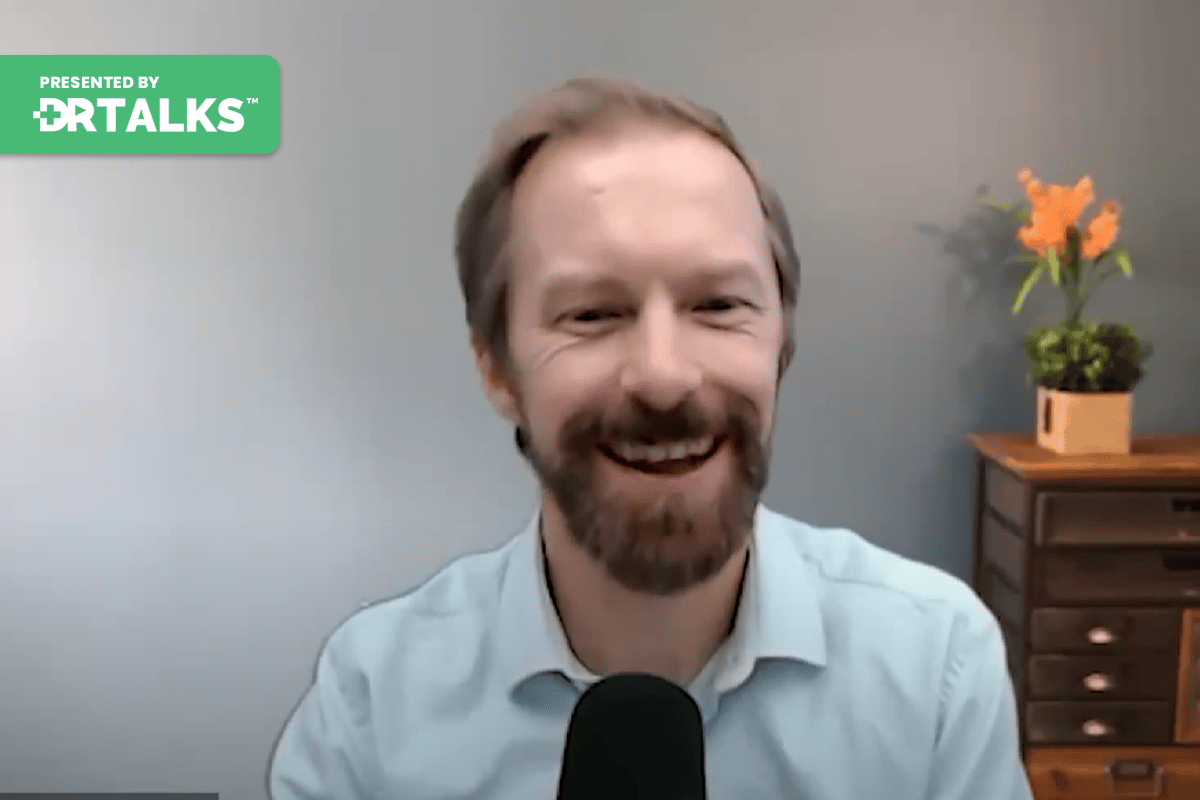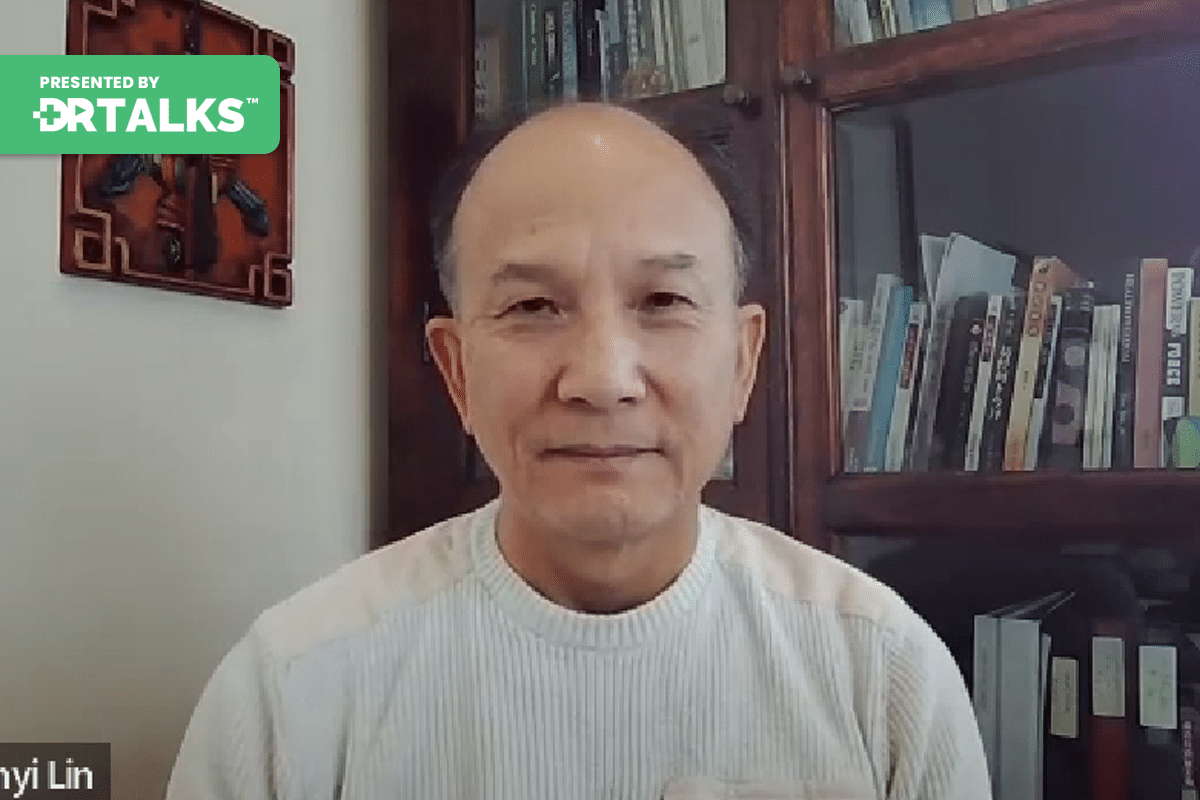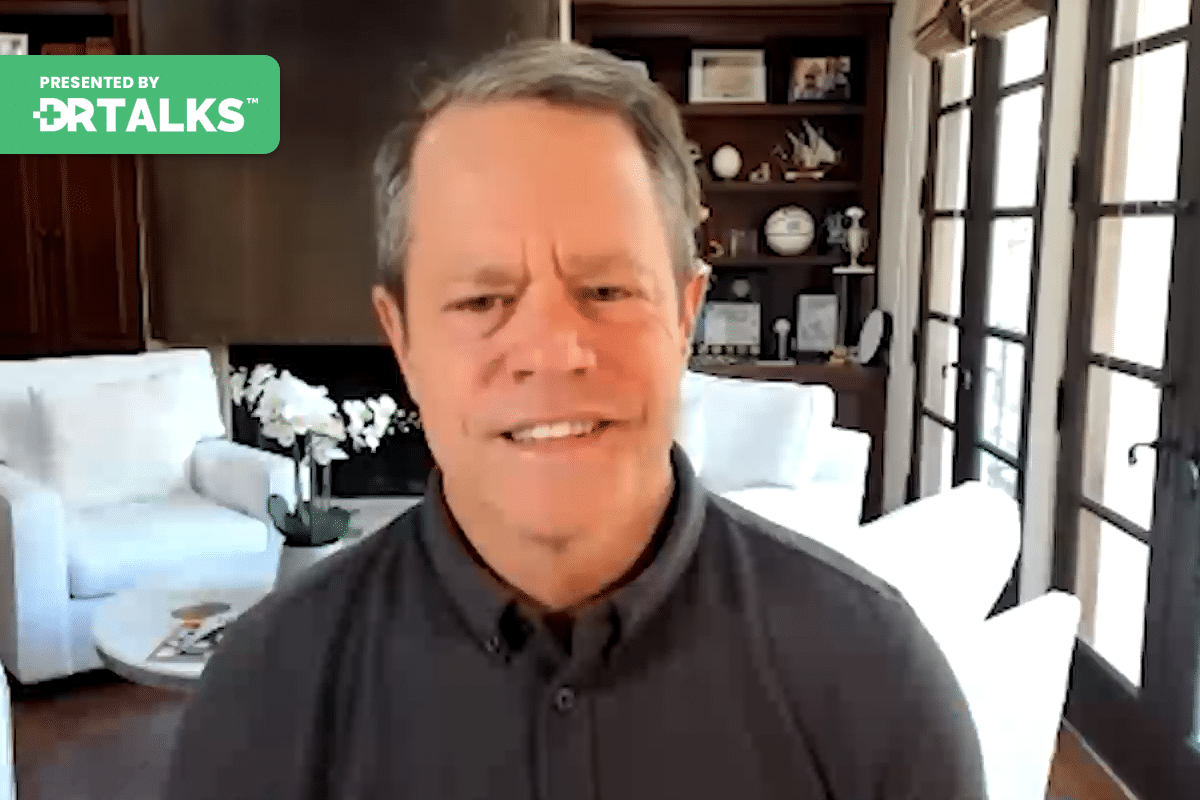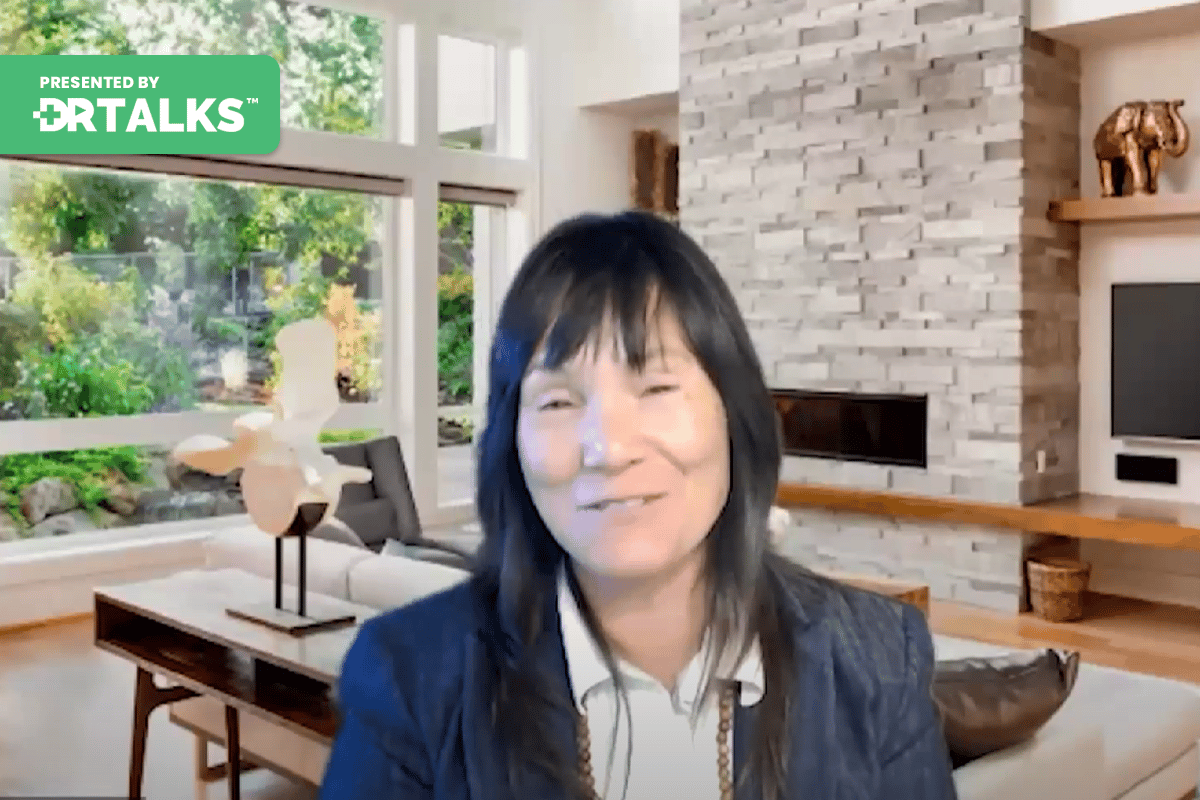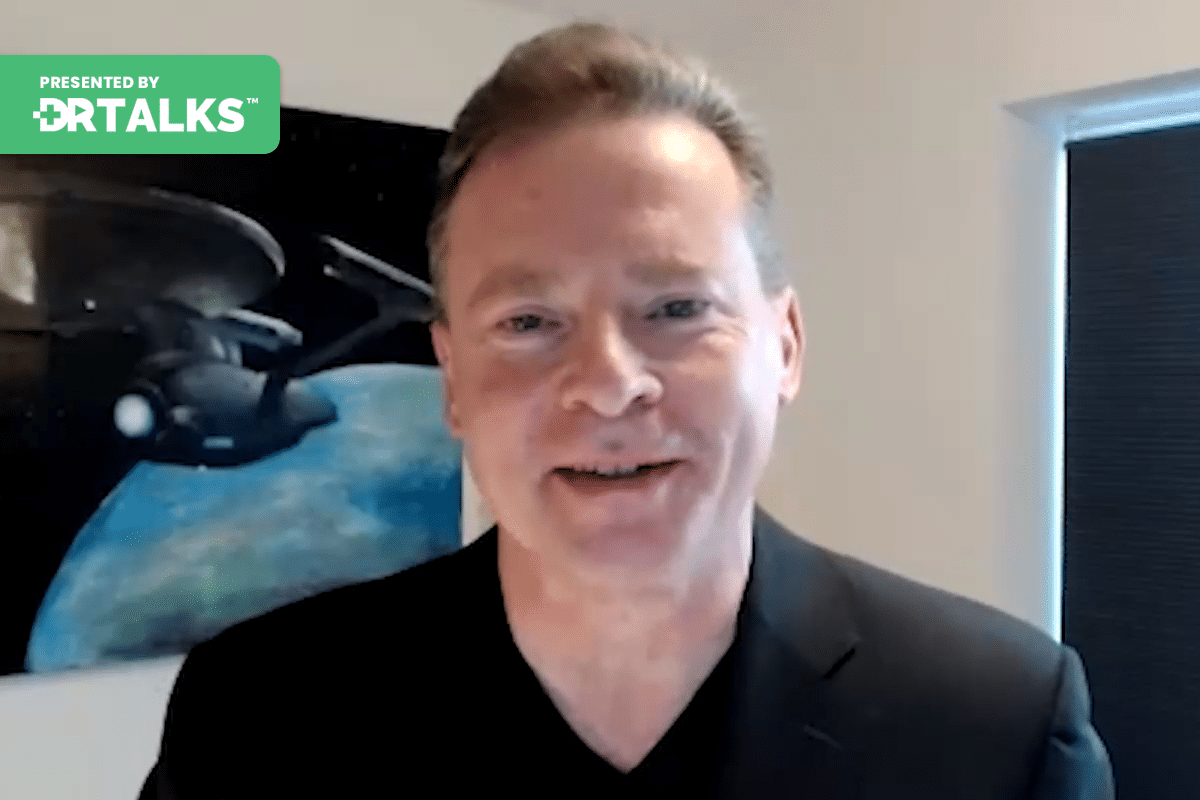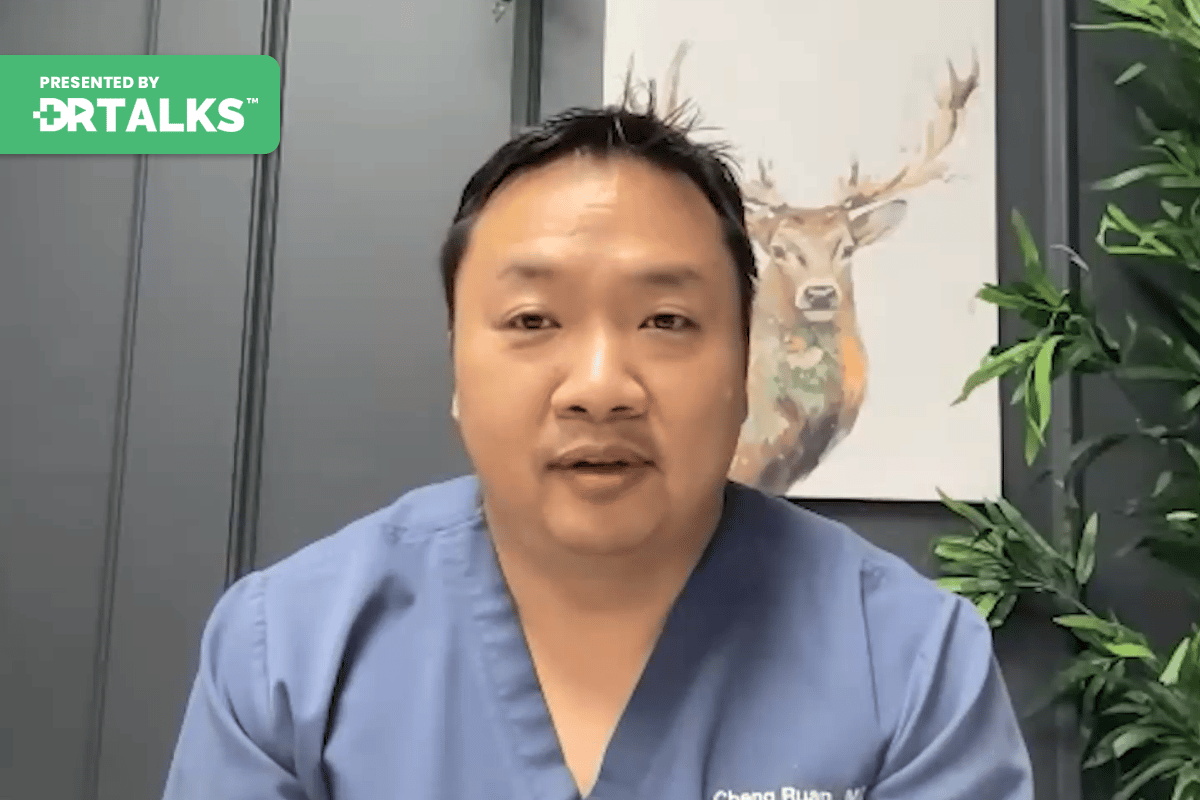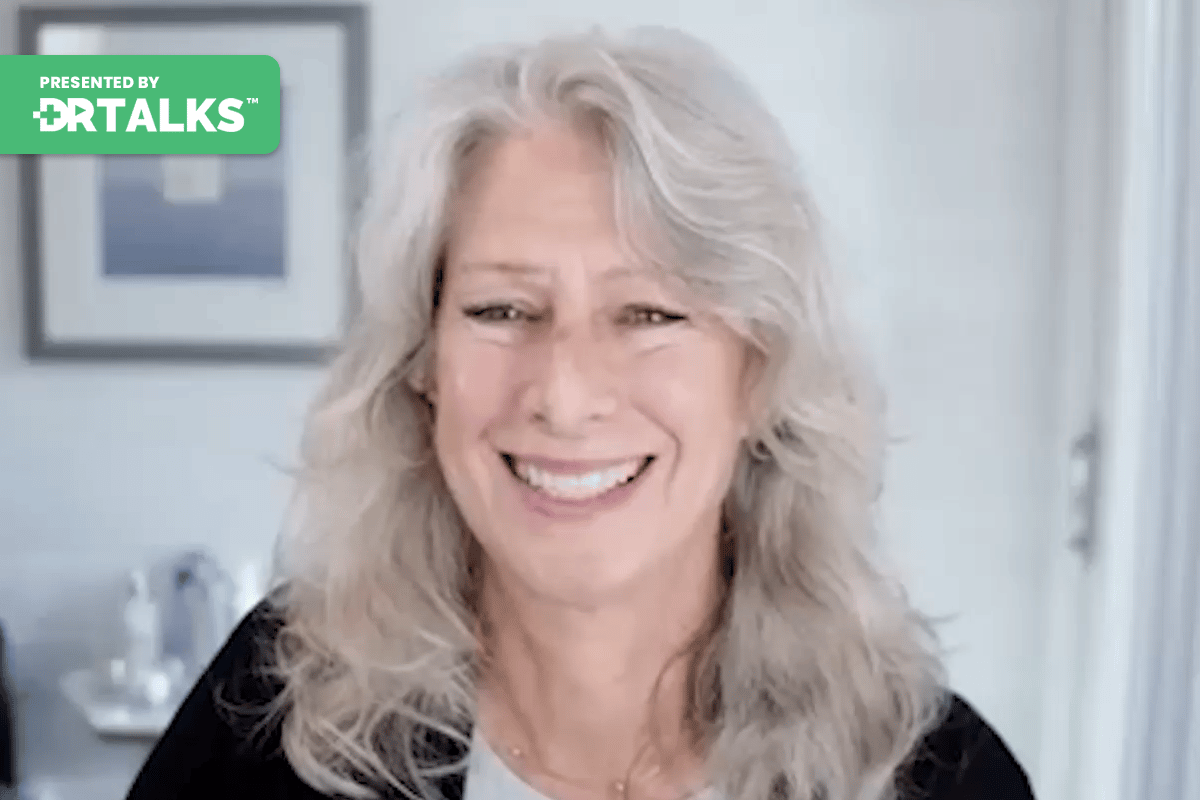Join the discussion below
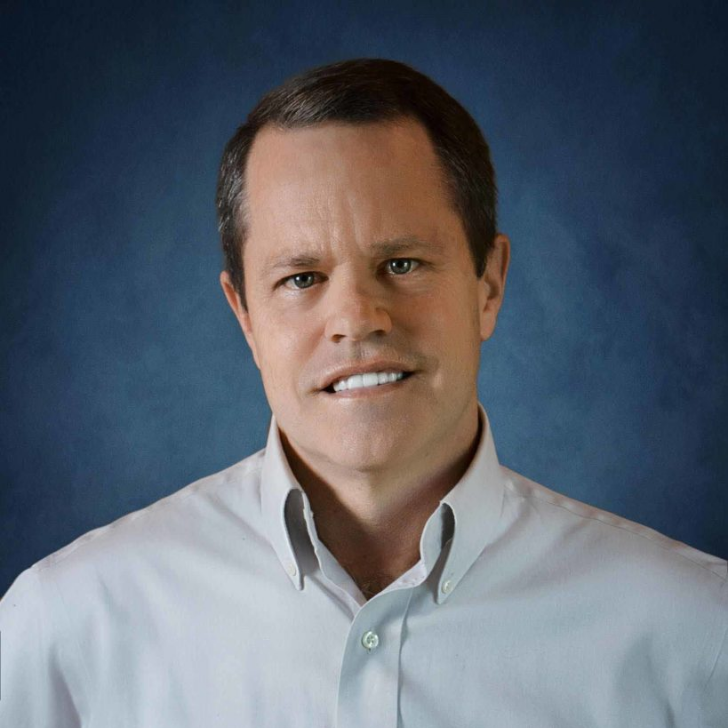
Tom McCarthy is a husband, father, author, speaker, entrepreneur, and investor who has owned businesses in the training, software, financial services, and restaurant industries. Tom’s clients in his training business include some of the worlds leading companies such as Cisco Systems, Microsoft, Salesforce, Wells Fargo, and MetLife. His latest book,... Read More
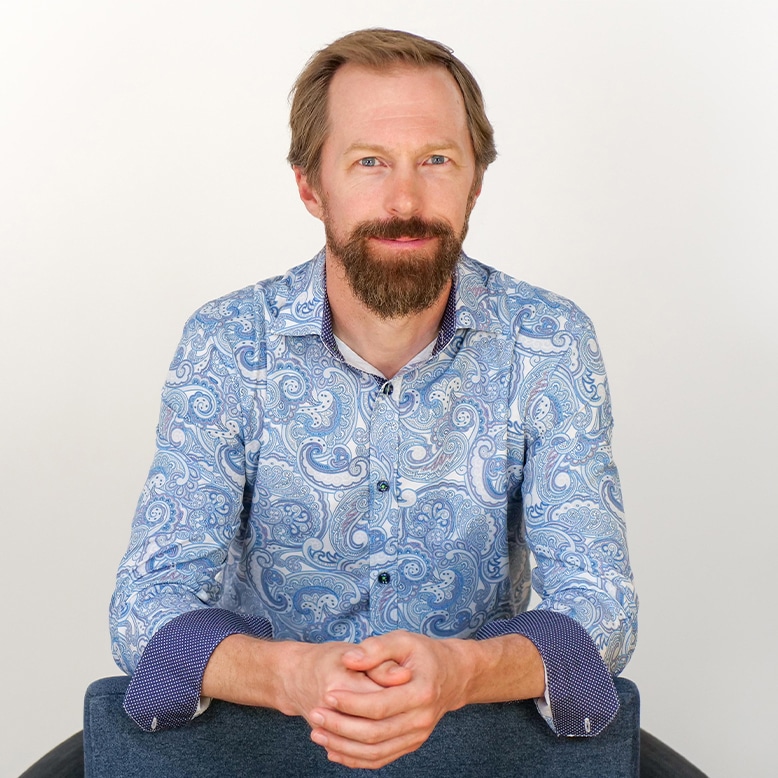
Dr. Tom treats some of the sickest, most sensitive patients suffering from chronic Lyme disease, tick-borne co-infections, mold illness as well as children with infection-induced autoimmune encephalitis (PANS/PANDAS). He focuses on optimizing the body’s self-healing systems in order to achieve optimal health with simple, natural interventions; utilizing more conventional approaches... Read More
- Why are tick-borne infections, such as Lyme disease, on such a rise? – global climate change and habitat changes, negativity increasing across the planet, etc
- What are the risk factors for developing chronic Lyme disease? – level of health and mindset pre-infection, etc
- Many people with Lyme also feel they have parasites, why do you say Lyme is THE parasite they need to be addressing and how?
- What are the energetic and spiritual lessons learned from your personal and professional experience with chronic Lyme disease?
- What good can come out of having Lyme disease and how does shadow relate to healing?
- Can you share some simple energetic and gratitude practices that can help someone suffering from Lyme or any chronic illness to begin recovering now?
Related Topics
Americorps, Antibiotic Treatment, Brain Fog, Chronic Fatigue, Chronic Illness, Ecosystem Studies, Energetic Healing, Energy, Energy Healing, Environmental Impact, Fatigue, Fibromyalgia, Global Climate Change, Healing Journey, Holistic Wellness, Institute Of Ecosystem Studies, Integrative Medicine, Internal Human Landscape, Joint Pain, Lyme Disease, Movement On Breath, Physical Healing, YogaTom McCarthy
I’m so excited to introduce you all to my next guest. He’s somebody that I met just this past year. But he always, he already feels like a great friend of mine. I met him in Puerto Rico at a summit that or a conference that I was speaking at. And he was there also and we just had a chance meeting. We were at this hotel, this, this beautiful setting in Puerto Rico and we were going to a party that the conference was hosting and we’re coming down on a particular, it’s almost like a little tram and I got on and he got on and we just started chatting and then we took a boat ride over to an island and I just felt like I met a brother on the way and, and, and not just because we both have the same name. His name is Dr. Tom Moorcroft. He’s an osteopath and he’s got a really incredible story. And I’m gonna ask him when we get going to share his story about how he overcame Lyme disease and chronic disease. And that’s what he focuses on. He focuses on helping patients suffering from chronic lyme and other environmentally acquired illnesses and just people stuck in chronic illness. And we’re having a great little conversation prior to this, you’re gonna get some incredibly valuable insights from him. Now, what he does is he focuses on optimizing the body’s self healing systems, the systems you already have inside of your body that if you have a chronic disease, they’re not being optimized. So he’s gonna talk to us about how to do that and, and also about how every single one of us is unique when, when we have this ability to tap into the body, mind and spirit to heal from these illnesses. He’s just a loving human being. He’s an incredible person. I’m so glad to have you here, Tom. Thanks for being on with us.
Thomas Moorcroft, DO
Well, Tom, you know, it’s such an honor, such kind words and there’s so much love right back at you and I’m really excited because like, I always try to learn something new every day and I had no idea that was called the for Niculescu. So I’ve got a new word in my vocabulary. But yeah, I’m totally looking forward to this. Thank you so much for the opportunity.
Tom McCarthy
That’s awesome. So tell us about your journey because I think some of the best healers are people that have actually gone through what their patients are going through. I mean, obviously doctors can kind of experience it by watching patients. But when you felt what they felt. And you’ve, you’ve had the anxieties and fears and lack of safety that they, that they’re feeling you really can empathize at a deeper level. And, and so one of the reasons I, I love you so much and what you’re doing is that you’ve gone through that, that those challenges yourself and you’ve come out the other side now you’ve helped thousands around the world. So tell us a little bit about your journey if you would.
Thomas Moorcroft, DO
Yeah. You know, I remember being at the University of Vermont, you know, teaching, you know, learning about the out of doors. You know, I was doing ecology and wildlife management because that was my passion, loved to play outside. You know, I love, just like looking at the trees and being in nature kind of for me, like my mom went to church and I went out in nature and just was in all of just, and it just over my life, I learned to like, you know, bring that into my everyday life. And so it’s important to me to learn more about that and protect it. And I was studying all the landscape changes and, and everything that was going on in the world as humans continued to evolve and live here. And it was more like we were kind of in this parasitic relationship rather than a symbiotic relationship with the planet. And I loved going to talk to people about it, but it was always about like, it was got very cerebral and lack of action. It was more like, let’s talk about what we could study rather than how to protect the environment. And so I said to myself, how do I, how do I actually make a difference in the world rather than just talking about making a difference?
And so I said, oh, I’ll teach kids because as soon as you get them excited, they just go out and have a good time. So I took an internship through AmeriCorps, which is kind of like our, you know, local Peace Corps version, you know, and I was teaching at a place called the Institute of Ecosystem Studies. And I was really learning how to teach kids about the outdoors. And while I was there so many of the people who worked there had chronic fatigue, fibromyalgia symptoms. They had like joint pains there 32 all of a sudden they have rheumatoid like symptoms without rheumatoid arthritis. It was really weird. And then one day my boss comes up to me and she’s like, Tom, like, you need to get some work done here because you haven’t done anything. I’m like, what are you talking about? Like, I’m here early. I leave late. I’m having so much fun. This is my dream and she’s like, no, actually the last two weeks, your performance is abysmal. So I think there’s something wrong. Why don’t you work on this? Project. I’ll check on you in an hour and an hour later, Chris comes back and she finds me staring at a blank computer screen with my cursor at the same spot on the screen blinking. And there’s this puddle of drool all over my chest as she kind of rows is me just like, I think you need to go to the doctor. So I was like, I think you might be right here. So, and I wake up the next day and I’m like, you know, I got all of a sudden it’s the timing is crazy. I got this rash that covered like 1/5 of my body and looking back like I was foggy and like tired and joints hurt and the long and the short of it was I go into the dock. He goes, hey, Tom, you’ve got classic Lyme disease.
Take Doxycycline, a type of antibiotic for like 10 days and you’ll be fine. And so for the first four days, I’m just laying on the floor feeling like crap, sweats and chills and it’s July. You know, my parents had, I was 23 my parents had to help me to the bathroom. That’s how bad it was. But, you know, then it started to pass and 10 or 15 days later I felt good. The problem was over the next eight years. Like, you know, the joint pain, the fatigue and, and like all that brain fog, just like kind of crept back in. So here I am trying to go to medical school, I can’t think. And it’s like, hard to do math in your head. And then, you know, and at one point it was just like every doctor I went to, wanted to just, you know, diagnosed with bipolar or depression. And then they’re like, you have ADHD and this thing and that thing and ultimately they, I went to my primary and said, please, everybody’s diagnosed me with stuff. I’ve tried a ton of different medicines and none of them have worked. And I’ve only had these side effects. So I’ve got brain, brain fog, joint pain and fatigue. And so he turns around and goes, I got it.
You’ve got brain fog, joint pain and fatigue. We call that fibromyalgia and chronic fatigue. That’s what you’ve got ceiling. Thanks for the help here because now I don’t know what the cause of my problem is and therefore, I don’t know how to fix it. So at this point, I remember very clearly, Tom, I was standing in my apartment staring at the wall and I was about to go down. I was in the kind of the abyss moment, you know, that kind of like I was, I was really kind of losing it here. I’m probably like 26-27 at the moment. And I’m just like, this cannot be my life because I saw my vision. I was recently married. We wanted to have kids. I love playing outside, love dogs and sports and like, saw my whole life in front of me and I said I can either grab a hold of that and go with it and if I fail getting they’re great. But at least I have a chance or I can just go down this abyss of what all the doctors told me was, I’m just gonna be like that forever. And as soon as I made the decision to grab hold of my life and, and fight for it with everything I had. And I just, I felt I was overwhelmed with love. Like I remember the wall again, I’m staring at another blank wall in an apartment. But this was very magical, you know, and I just was like, I have a chance to live out my dream. And a couple of days later, a friend of mine handed me a DVD of Ashtanga yoga. And this is kind of the conversation that we had. You know, and it was like, I started doing the yoga, I couldn’t touch my kneecaps, everything hurt. But I just kept hearing my teacher in the back of my head. It’s yoga is movement on breath. If you can’t fully breathe, you’re not fully alive and you’re trying too hard. And that was the beginning of my whole journey to healing. And at this point in time, I did ultimately get about 70% better with the yoga and then learning how the energies that started to flow through my body and then I needed the docks. So about 30% of my healing with them. But that’s not what medicine tells us when I learned that 70% of it or more was all in me. I was like, I’m gonna quadruple down on that. I’m gonna learn that and teach that to other people. That’s kind of how I got here.
Tom McCarthy
Yeah, that’s amazing. And you, and you know, you’re, you’re giving us a very short description, but you told me the pain you would feel, you know, you’re just married. If your wife accidentally touched your arm, you would feel like shivers throughout your body from the pain.
Thomas Moorcroft, DO
So that one’s interesting for anybody who might experience it. Like Jill would put her elbow right on my arm and it like zap down to my fingers and then, then the way I describe it is, it felt like Darth Vader shoved a lightsaber up my arm into my skull and literally it can be that crazy bad, you know.
Tom McCarthy
Yeah. Well, that’s why I had chronic fatigue and you’re actually still helping me today, right? So since I met you, you’ve done some helpful things for me, but I had chronic fatigue back and 2015 and the type of symptoms I had were just crazy mind boggling like, you know, not only pain, but I’d be seeing double. I thought I had all sorts of other stuff and, but, you know, when, when, when the mind and the body get thrown off like that, it creates these, these scary, scary symptoms that lead you to think you’re dying or, I didn’t know, I didn’t know what was happening. But, you know, thank God we have physicians like you. So let’s dig in here. Why are tick borne infections like lyme on the rise? Because we certainly hear more about it today than we ever did back in the past.
Thomas Moorcroft, DO
Yeah, I think it’s interesting how my worlds came together. You know, because to me, you know, whether you call it God or life force is a universal and whatever you wanna call this energy that lives and breeds us and we’re a part of and connects us even over zoom. You know, to me, the the universe kind of put me in this direction of learning about the landscape and then learning about the internal human landscape, both emotional and energetic and physical because, and, and, and it helps us understand why lymes even important to be talking about on an energy healing summit. But, you know, we are changing the environment and where we have global climate change. We’re seeing when I went to the University of Vermont, you never barely ever saw like any kind of tick, much less a deer tick which gives you lime in northern Vermont. But now you do. So as the temperature changes, we don’t see as much die off of tick populations in the winter as we used to and their range is spreading. The other thing is ticks and the chipmunks and the mice and the small rodents that are the, The sort of the, the host for the bacteria that we call Borrelia Burgdorferi, which is one of the causative agent of Lyme. They like what we call an edge and edge is very simple, simply like what it sounds like if you took a, you, you know, took a field and you took a forest and the edge is literally 10 ft out and 10 ft in from that intersection.
So now if we go to our yards, we see that we like greenways now. So everybody’s creating an edge in between their yard and their neighbor’s yard. So they don’t see them as much. And then they also create these really cool things called like flower gardens. All these are great edge places, right? And so the more edge we have, the more ticks that we potentially can get exposed to. And that there are two of the big reasons. And I would think a third reason and we’re seeing a lot of this with the pandemic that hopefully is in the winding down stages. But fear and negative emotion is really bringing down our immune system’s ability and resilient, you know, to fend off infections and our resilience to environmental stressors. And one of the things that we see a lot of is that like in Connecticut, where are our practices based? There’s a lot of people exposed to lyme but not all of it, meaning they got bitten by and their body might have fought, fought it off, but there are more and more people unable to fight it off. And so they’re getting, you know, sicker and sicker sooner and sooner. And I think that immune suppression that comes with sort of this toxic environment that we’re seeing is one of the reasons that we’re seeing more lyme. And it’s also a place where we could do a lot of great work in, in the world, which is really awesome that you’re, you’re, you’re sharing this message with everybody because it’s a key. I always talk about prevention. But if we can optimize our immune system, even if we can’t fix the external environment, we can really work on our internal environment. So that’s a real key as well.
Tom McCarthy
That’s huge. That is so huge that especially that last part that you just said because, you know, looking back when I had the chronic fatigue, I know, I know my immune system was suppressed. I was traveling all over the world. I wasn’t sleeping enough. I was kind of in a little bit of a frenzy. I got a little virus and then, you know, I didn’t get better right away because my immune system was suppressed. Then there’s lots of fun fear and, and then it took like, you know, eight months for me to kind of flip that around. But that’s, and that’s not just for line, that’s for any problem or many chronic diseases. That what you just talked about, the negativity, the fear, the anxiety that everyone is experiencing is creating the potential for us to become sick, right? And stay sick. So I love that you brought that in. So that, that is probably one of the risk factors for developing chronic lyme or, or, you know, chronic diseases of all kinds. What are the risk factors that you would say, you know, make people more likely to have these chronic diseases like lyme.
Thomas Moorcroft, DO
Yeah, that’s sort of the, that’s the big one, right? I mean, that’s really the most important one to be thinking about in, in my mind. You know, and I think a lot of it is just these lifestyle things that we hear about, you know, I grew up Coca Cola and other sodas were food groups, right? And you know, every night was, every Friday night was pizza night. And you know, I’m not against these things, but there’s certain processed things that your body is just not meant to do. Like there’s certain electrolyte beverage out there that some of the ingredients are like car Nebo acts like I don’t need that in my body, right? So a lot of this stuff that you have control over is what you’re putting into your mouth. What thoughts you’re allowing into your mind because we have the ability to accept or reject what someone else says to us and even what we say to ourselves, we can just, you know, you don’t have to agree with everything your mind says because that there is that sort of like physical toxicity, but also that mental emotional toxicity. And we were just talking like, I like, you know, I like to spend time in Utah primarily now because of the environment. And to me, one, it’s nice because there are many, many less ticks there. But I love being outside. And, you know.
I find joy in my life. I find the practices that work for me because I know there’s so many people who have a practice that works well for them. And whenever I talk to a patient, I’m like, it’s okay to share my practice. But I want to have a large Armamentarium of good practices that give them a choice to do something that would actually they would want to do. Because one of the things for me is like, if I told someone to do yoga and they’re like, I don’t like doing yoga, doesn’t agree with me for whatever reason. They’re probably even, and I just had no Tom just keep doing yoga and you might not do it right. Because you’re just like, not into it. So find the things for me. It’s like I get real simple with these things. Find the things that your heart is drawn to that you’re innately interested in hobbies, sports, family engage in it and really just allow, create the environment of love and, and, and an experience of joy in your life. Because to me when you don’t do that, you put yourself at higher risk for these infections. And obviously, you know, we should probably talk about, oh, like when you go out in the woods where the herbal spray, because the commercial deed is toxic and it doesn’t really kill ticks and you can put Perma grin on your clothes and yada yada.
But the reality is you have, you have some control over the outside environment and I’m and it sounds like a lot of the people you’ll be talking with would talk to someone. We have so much control over our internal, internal environment and the boundaries between our internal and our external environment that we can change that to me, that’s like the starting point of, of all these things, you know, think about what you put into your body, you know, and make sure you’re drinking good clean water, make sure you’re sleeping. Focus on sleep decrease. Like you’re saying, like a lot of our patients will get infections, will trigger heightened anxiety responses, find ways to tune that down so that you can get to sleep create ritual in your life that works for you. When I grew up my, and this is an interesting thing that sometimes pops into my brain when I talk to people. But my mom always said Tommy God will be there for you when you want to come back. And I was like, I don’t think you understand. I just told you about my five day hiking trip in the White Mountains of New Hampshire. I’m like, God is everywhere. Like, but it’s, and so I said to my mom and this is a piece of, of healing that I learned kind of the heart way if you will or just through experience, I was asking my mom to let me be myself and have my own relationship with, you know, life. But what was really interesting and I was like, you’re not letting me have my relationship. And it was like three or four years into having this thought process that I go wait a second. If I want my mom to allow me to have my own experience of life, then I have to allow her to have hers. And I said for once in my mind and in my heart, I said, if my, every time my mom said that I’m just going to see it as her trying to love me in her reality. And as soon as I did that, the topic never came up again.
Tom McCarthy
That’s so beautiful. Yeah, because energetically there was no need for her to do it anymore. Right?
Thomas Moorcroft, DO
Right. And, and what was, and what was interesting was a lot of what I talk about in healing. Tom is self worth and, and being open to receiving the healing. So many of the people that I see are out there like they do everything for everybody else, they give all their energy to others. And I was like this, I always said I put myself first and then everybody else. And really, it was lip service. I made, I made my calendar look like I was taking care of myself. But I was always doing it for another reason. I wasn’t really receiving how loving and valuable I was and really just being open to receive this. And when I was able to receive my mom’s message, not the word, necessarily the words, but the love and the vibration that energy behind it. And I truly received it. Then like you said, she had no need to keep doing it because energetically our bodies communicated and our hearts were connected at a level even deeper than ever before.
Tom McCarthy
Yeah, what a beautiful lesson. That is amazing Tom. I love that. I love that. You know, you talked about right up front, you said 70% of your healing was through you taking control and then 30% was help from some doctors. And so when you treat people, obviously, you’ve got different tools you can use. And I know I’m using some of your tools right now with, you know, little drops of things that I’m drinking and Vitamins and things like that. And then there’s probably some times where in severe cases you, I know it’s not something you go to right away you might have to use, like, more of a medical intervention, like an antibiotic or, or that type thing. But 70%, Is what we can control. And if you just do that, 30%, you’re probably not gonna get healed. Right? Because that internal mechanism and we were talking earlier, the ability for people to feel safe is such a hit Healing mechanism that, that we all have, you know, when I had the chronic fatigue and I, you know, sorry for keep going back to that. I did not feel safe and that’s why I would be in bed like 12, 13 hours a day, but I was not getting any better. Right. I was waking up, tired and exhausted and talk about safety. Talk about how do we, when we’re, especially someone who is in the midst of a chronic disease where they’re, they’re feeling threatened. They’re, they’re not sure if they’ll ever get better again. They don’t even know if, you know, this could be the end of their life. I mean, crazy thoughts like that were coming in my head because I felt like I was 90 years old. Like, how can somebody feel safe or start to feel safer in the midst of this, this chronic disease that whether it be lyme or anything else, what, what are a few things that you can recommend for people?
Thomas Moorcroft, DO
Yeah, I mean, I just, I’m flashing back to Jill touching me. It’s like here it is theoretically the person who’s closest to you in the entire world that I’m like, get away because it was like an attack. And, yeah, I mean, what’s interesting is when we, when we look, we look at the nervous system, a lot of us learn about the sympathetic and the parasympathetic response, right? And the sympathetic part of our nervous system is often sort of described as the fight or flight mechanism. So I’m hanging out at the fire. Saber tooth tiger comes in because we’re neanderthals or whatever hops up there and I fight or I flight, right? So I either feel like I’m so strong today. I’m so big. I can fight off that, say I can win the battle, hand to hand combat. The other thing is I go, I can’t win that battle, but I know I can run away and my best bet is to run then so and then the parasympathetic is kind of this rest and rejuvenate were around the fire. We’ve got guards way out there were totally safe. It’s time to have like, you know, that loving relationships tell stories, share a meal, digest your food and sleep. The thing that we found though was when we, there’s another part of our parasympathetic nervous system that relates to this piece and, and it’s kind of the opposite or fight or flight because in either event of fight or flight, I can get away. But what if the sabertooth tiger grabs me in its mouth? I can no longer get away. And that’s a pretty unsafe place to be.
So if you think about more modern day, many of us have seen a cat outside grab a mouse or chipmunk and it looks like it’s dead, it’s playing dead like this and the cat gets bored, drops, it spits it out looks this way. The chipmunk runs off that way and that’s a place that so many of our people are nervous systems get into a freeze state. So when we so in either event in the sympathetic fight or flight, we know we can win or we think we can win. But when we think we can’t win, which is what you and I were feeling when we had the chronic fatigue and fibromyalgia, whatever the cause maybe then we freeze and the thing is when we freeze, we feel hopeless, we feel isolated, we feel literally frozen and every and it’s like doom and gloom and what you’ll see is people will start to do this thing and they don’t look at you when they talk to you and they bring their voice down and they curl up and hide and you can actually physiologically see this with your environment, like in the pandemic. So many people got crazy, crazy sick from weird things. And because they were isolated, so it was almost like a forest freeze state and in freeze, one of the big things as we see your G I function goes down and your immune system function goes down. So how do we get out of that? Because that’s where we get into the safety.
And so you’re not, you don’t feel safe. So you’re paralyzed. And now what I learned a lot of times like, oh, do this and that and you’ll get, you’ll feel safe, maybe you just need to get better and you’ll feel safe, right? And so the problem with this is what I realized is so many of my people would be, would start to make really good progress and then they would just, every time they get to that point, they would go back to the original baseline. And then we have this thing in medicine, people talk about like an illness mentality and it’s like then people send people for psychotherapy and they all kind of why do you want to be sick and why you identified with your illness? Well, I’m gonna tell you why it’s evolution because when you first, when I first got Lyme Disease, it was scary as snot. And then they gave me a little bit of treatment and I got a little bit better, but it crept back in over time. And the longer that the bad experience of the poor health experience became part of my life.
The more familiar it became, the more familiar it becomes the safer it is. We all know our little kids like to play the same song and the same video over and over and over and the parents like, oh my God, can we please not do this? You know? And so what we do is we, we then have to say the, we have to understand that this illness state because it’s been chronic, becomes familiar. And when we ask you to change and you start to get better or you have a flare from your treatment when you’re killing off something, those two are both very unfamiliar states and the concept of if I go back to being sick, at least it’s a safe place. So all of our interventions work to move us in this direction of learning that this is safe. And this is why when we say that body, mind, spirit thing, we can’t just work physically and give you just the herbs. We can’t just give you the prescription antibiotic or the I V and about whatever we have to work on moving you in a direction of creating a new safe baselines. We have to create an area of safety around you with your family, your loved ones and then hold your hand and walk you through the process of getting better.
Tom McCarthy
That’s so important. I think that’s what miss, that’s what’s missing and so many treatments that, you know, people are thinking are going to heal them is, I mean, I know that, that to me was, was the big issue like safety and still, you know, continuing to work on that. So that’s awesome. That is so cool. I’m glad that came up in our conversation earlier because that is so critical.
Thomas Moorcroft, DO
And you know, it’s interesting Tom, if I may for a second, there’s all kinds of different techniques out there. We can do our breath work, we can do our meditations, we can do our affirmations and simply we can do grounding exercises. And one of the things I learned about Lyme disease is lyme does not fight reality. So Lyme disease is just like it’s an opportunistic bacteria that’s in your body and it’s doing its all its own thing and it is just waiting for you to kind of let your guard down from a sort of a, you know, an immune system perspective. So a lot of people in chronic Lyme talking about they have to treat parasites before they treat Lyme. And some people have parasites. But for me, Lyme is the parasite, it’s this emotional energetic parasite. It creates a negative self talk loop that people get into and then they don’t feel safe. And what’s the crux of the matter here? And I believe as we do more research will see in other places, if I do a a spec scan of your brain looking at glucose metabolism and such and what parts are working aren’t lyme disease, the bacteria will, can impact areas of your brain that allow you to recognize safety in your environment.
So you see a lot of people like they don’t understand the intonation in your voice, they don’t understand your hand gestures or you know, the, you know, the facial expressions you have. And this is physiology, this is, you know, your brain having inflammation in certain areas caused by Lyme. The issue becomes though being in this unsafe state, whether it’s from Lyme or not will lead to the exact same changes in your brain. So now you go back to the 70% because everybody talks placebo is like 33% of all medical outcomes. And I’m saying it’s at least 70% and you can harness that for. So everybody watching has this control. But the reason that we know we because the bacteria can cause this thing, we may not be to directly get at the bacteria and the way it hides all the time as efficiency, as efficiently as we would like. But we have the ability to start making through our practices, these changes in our nervous system, which basically make our brain and our emotions inhospitable for Lyme Disease. And we create a safe environment and that’s the reason I bring it up is there’s this sense of dis ease that a lot of people talk about. So we just hyphenate disease and say we’re in a lack of ease. So lime is just waiting around for an opportunity. What we wanted. What I found is when I was a kid, I walked on the planet and I felt earthworms under the ground and I put my hand on the tree and I could feel sap flowing. And then people told me I was weird and you shouldn’t be like that. So I didn’t and then I got sick. And so I went back to being a real tree hugger and walking around and feeling the energy all around me rather than fighting it.
I was open to who I was. I learned the ways to move my energetic boundary in and out and ground myself to the planet, but also received back from the grounding, receive the energy from the planet, connect with the universe, but also received from the because I think I think a lot of us talk about connecting and grounding and but it’s like we received from the universe, but we don’t reconnect, then we, we connect to the planet, but we don’t receive. And at least in my mind, I needed to learn that lesson. And when I Did that and I got back into that balance of in and out and all of that stuff, that’s where I started to be more natural. And when I started to be more natural, just like the infection that was in my body, it left my body and I’ve been symptom free for over 12 years now. And most people tell you that you can’t do that in line. So that’s what I’m saying. You got to do this stuff.
Tom McCarthy
Yeah. That’s amazing. And you talked about some of the energetic and spiritual lessons you learned also, which is really cool because that was one of the questions I was gonna ask next. What, what good can come out of having Lyme disease? I mean, there’s always, there’s always a double edged sword in anything, right? You know, I’ve always told my Children that when something comes at you that, you know, is an adversity or a challenge, there’s always something that you can milk it for and become better. What, what good can come out of having lyme or any chronic disease?
Thomas Moorcroft, DO
I think it’s a great question because obviously the one side of the sword as it sucks and I don’t wish this on anybody right? Having been through it. That’s why I’m like, hey, prevented, do this stuff ahead of time. Reconnect to yard before you get sick. You know, one of the biggest things that comes out of my patients that at least in my patient population is there, a lot of them are like, I’m ultra sensitive, whether they’re like mast cell activation syndrome. They have mycotoxin and mold illness, lyme and co infections. All of these, they’re like, I am so sensitive. I can’t take anything. I go, no, actually there is a little bit of that maybe. But there’s probably a lot of you, your illness has kind of hyper stimulated your, your nervous system and your emotions to actually start to be, go back towards your natural state. Now, when you get to your natural state, you just have to learn how to control it, right? I went to an osteopathic course one time because we did a lot of hands on where training did a fellowship in this and taught for over a decade, you know how to interact with the energy systems of the body from the an osteopathic perspective. And one of my early teachers was like, we’re like, whoa, we’re really, you know, when we got together as a group and they had an experience, we’re really feeling a lot. She’s like, that’s really good. You can do that now turn it off. I’m like, no, I ain’t turning this off ever.
This is amazing. But a lot of people get freaked out when they really get back in touch with source because the energy is so strong. And if your nervous system is not ready, that’s why a lot of the programs we go through, people start you at .1 and you go a little bit further cause I’m well known for like I start on day one and on day two, I do day 14 and on day three, I do day 57. And then I’m like, why do I feel this way? But, but, but I, but I’ve also trained in a lot of things where I like that. And I think that one of the beautiful things are you learned to interact with your environment in a way that is more natural because you have to because you don’t have, you can’t sometimes engage in these higher technology ways. Sometimes the screens bother you. Foods by the. But learn, I would just say when people sit and I did a presentation in medical school, I hadn’t thought about this in a long time, so I appreciate you having it come up for me. And I did a case presentation and remember everybody’s like you’re, you’re too early in your career to do this. It’s for people who are further along in your training and I’m gonna do it anyway. And, I titled it the day I learned to listen.
And it was really interesting because I reflected back in my high school yearbook, quote was from James Thurber. It’s better to know some of the questions than all of the answers. And in medicine, we’re taught to learn all the answers. So I have a lot of patients come in who have looked for a lot of the answers. And what I would invite people to do is sit back and learn to listen what’s in your body and find out what questions should be asked. Like, what do I actually need? And when I got the yoga DVD, I started to do it and then I started to learn to listen to what was going on in my body. And then the energy wasn’t so freaky. And then I knew who to talk to, to help me learn because there’s people out there to support you like all the great speakers on the summit. And, and that’s really the thing is I think that you learn how to go inside and realize that self, Andrew Taylor, still the guy who sort of created the osteopathic profession, which is, you know, uniquely American. It was created in the front on the plains of, you know, in, in, in, in America. And in the mid 18 hundreds, he was an M D and a preacher which I guess was common back then. But he would go around and he talked about this crazy idea that we have an innate self healing, self regulatory mechanism. So as a provider, my goal is to catalyze healing and then get the hell out of the way and stop back in maybe a couple of days before the catalyst wears off. But it’s really to empower you to understand that the Gods Drugstore, the universal drug stores in you. The reason morphine works if I give it to you, Tom is because you have a morphine receptor. The reason a lot of the like things like marijuana work or ibuprofen work or even CBD oils, we already have those receptors.
So you can take it externally or you can create it within you. None of the drugs that you took would work if you didn’t have a receptor. So you can turn on the drug store inside. So you only have to reach to the external drugstore once in a while and it’s there, it’s good. And also I learned that While the primary mechanism for me to stay healthy and even to heal is within me every once in a while I still need help from outside. And that’s okay. But my doctors didn’t even come into my life. I mean, I went to doctor after doctor, I probably went to 30 doctors before I got that yoga DVD. And they tried hard, but they didn’t have answers. And then after two years of yoga, then these two wonderful doctors in Maine came into my life and I was ready to receive that healing, but it took me eight years to find them. You know, so, and I firmly believe that the reason that they came into my life was I had done the work and learned the lessons that were mine to learn before they came.
And then everyone listening, it’s like I have all these cool things that I think about the lessons I’ve learned from chronic illness. And I try to teach people to shortcut their healing. But learn, ask the question of what lesson is this in your life to learn? And don’t dismiss the bad shit. You’ll never forget that you’re not feeling well. But also I’d invite you to open up a day and say, what is that thing that I’m here to learn today that you can have gratitude for? Because when you have that gratitude, your nervous system calms down. Your heart opens up that insomnia that you’ve had all the time starts to go away. Now you can sleep. Now you can detox your brain. Now you can do all the other stuff. And it really starts with just opening your heart and saying yes to yourself.
Tom McCarthy
Amazing Tom. You are so such an enlightened being in such an amazing doctor and healer. I know, I know you’re booked up like way, way in advance. But how can people access your wisdom and, and your, your, your, your help? I mean, what, what, where can they go? What tools do you have that they can tap into?
Thomas Moorcroft, DO
Yeah, thanks. You know, so our practice is origins of health, you know, and so we’re at originsofhealth.com, you know, on the Interwebs and Facebook and youtube, same name, just Origins of Health. And like you said, it’s been challenging to be able to see everybody one on one and, and I feel like I’ve held back in the past as you know, and like one of our big projects now is called the thrive with lime blueprint. And basically this is where we’re doing a group program for people where myself, My coaches can reach more and more and more people. And so that’s, you know, just thrive with line blueprint.com. And it’s, it’s this opportunity to get the 70-plus% before you even get in front of the right doctor or maybe you’re working with someone and you want to supercharge it. And we also train practitioners because I want to make sure we’re not harming people with the treatments because there’s a lot of treatments that are out there. And so we have a lyme disease practitioner certification. I think it’s a lime practitioner certification dot com. So certainly always happy to hear from everybody and help them anyway we can.
Tom McCarthy
Yeah. So if you or someone else and there’s so many people right now on the planet that are dealing with this issue, if you or someone else’s is suffering from this, I would highly recommend you tap into Tom. I just had my blood work done, you know, through you and we found that I had some of those markers. So I’m working through some of that too with Tom and you know, absolutely just an amazing doctor. You are a gift to the planet and I’m so thankful to have you on Tom. Any final parting words, you have for everybody.
Thomas Moorcroft, DO
Yeah. You know, I mean, literally, it’s like, say yes to yourself, open up your heart and, and spend the time in your life to really find that thing that you love and, and dive into it. Find your hobbies with your, you know, connect with your loved ones and your family members. None of us know how long we’ve got. And I just think that like for me, when I realized that you can heal from lime, you can heal from any chronic illness. And the way to supercharge all of that is to just ignite love within you. And I guess maybe the parting words should be from one of my teachers and from through her teacher. So there’s this really long lineage of people supporting you with energy right now is whenever you treat someone from the higher vibrational frequency of love, it doesn’t matter what you do, it’ll all work out. And so I would just invite everyone to turn that inward and really focus your because you can’t love anybody else fully until you love yourself. And that was the biggest part of my healing journey was to not only give to other people and call that love, but to really truly receive it in me. And that’s what really got me back to the place I am now.
Tom McCarthy
I love it. Thanks so much, Tom. You’re amazing. Thank you so much for being with us.
Downloads

